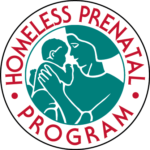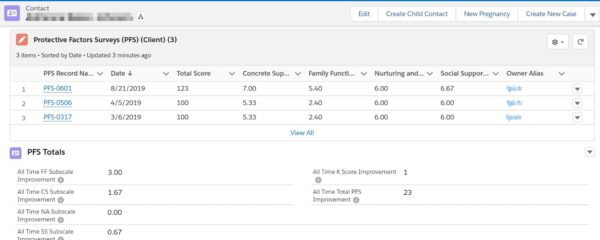 Homeless Prenatal Program (HPP) is a nationally-recognized family resource center in San Francisco that empowers homeless and low-income families, particularly mothers motivated by pregnancy and parenthood, to find the strength and confidence they need to transform their lives.
Homeless Prenatal Program (HPP) is a nationally-recognized family resource center in San Francisco that empowers homeless and low-income families, particularly mothers motivated by pregnancy and parenthood, to find the strength and confidence they need to transform their lives.
HPP serves low-income and homeless families, providing programs and services to help families become healthy, stable, and self-sufficient. They offer support in four areas:
- Healthy Babies: Perinatal services to promote healthy pregnancies, births, and bonding.
- Safe, Stable Housing: Housing support, including education, resources, and limited rental assistance.
- Nurturing Relationships: Services designed to strengthen families.
- Economic Sustainability: Job training, financial education, and other resources to encourage family stability and self-sufficiency.
The core of HPP’s work involves case management—working one-on-one with their clients—as well as providing classes. To be effective as an organization, they need to follow and understand the client’s journey. This involves tracking what they have done in case management, what classes or services a client has participated in, and what time is spent working with a client in a group or individually.
Challenges
HPP reached out to us when their Salesforce system was no longer meeting their needs. They had two major challenges:
- Use of Custom Code. Their existing Salesforce system was built with lots of custom coding that limited their ability to manage, understand, and grow their system in-house.
- Hidden Hallways. Their system captured most of the data they needed to see the client’s journey within their organization, but it was buried in what they called “hidden hallways.” They didn’t always know which “door” to open to find the information, so it took many clicks to get what they needed.
Bigger Boat was able to help address both of these challenges. HPP did their homework and was prepared to work with us. They knew they wanted a system that was easier to own and manage in-house. And they had already spent time establishing their outputs and outcome measurements with one of their key funders, Tipping Point.
Approach
As we do with all of our clients, we started with a discovery phase to gain a shared understanding of the challenges and goals. Based on program needs and the two major challenges, we decided to focus on the following areas for this project:
- Improve the client registration/intake process
- Move to Salesforce’s Lightning user interface
- Remove hidden hallways and provide a client journey view of their data
- Add Protective Factor Survey (PFS) results and measurements. PFS is an industry-standard assessment tool used to evaluate a family’s protective factors like resiliency and social support.
Additionally, Bigger Boat and HPP agreed that all project goals and decisions should factor in the ability of HPP staff to maintain the system moving forward. This key value would allow HPP to move away from code where it wasn’t needed. It would also give their Salesforce administrator the ability to understand, maintain, and enhance the system in-house in the future.
Approach Details
Improve client registration/intake process
The existing client registration process was a highly customized solution that worked well when initially implemented, but no longer met their needs. They had a custom-coded Visualforce page that mimicked the paper forms the client filled out. As HPP and their processes changed, their customized solution required changes that their in-house administrator was not easily able to make.
We moved from their custom Visualforce page to using standard Salesforce functionality in Lightning. The registration team now creates a basic contact record, and then uses a series of declarative Quick Actions with pre-filled information to fill in the additional data that the team gathers in the intake process. These changes let the team quickly register clients and adapt their system to evolving processes.
Move to Lightning
Moving to the Lightning user interface (UI) gave HPP a new set of UI options, such as Quick Actions and Lightning record pages. These enhancements allowed HPP to improve their view of the client journey through declarative Salesforce tools while removing their reliance on custom-code Visualforce pages.
Remove “hidden hallways” and provide a client journey view
In their current system, HPP collected most of the data they needed to see how their client was progressing through the organization, but the data was hard to see in a single view. It required many clicks into related data, which obscured the bigger picture of the client’s journey and relationship with HPP.
With the move to Lightning, we transitioned the client records to a Client Journey Lightning record page. This new page gave case managers the full client journey view they needed when reviewing the case with their own managers.
The case managers meet regularly with their managers to review their clients. Without the Client Journey Lightning record page, they would need to click through many of these related lists to get to the information they needed. Now, they start with the Client Journey page, as it gives them the comprehensive view needed for these discussions.

The Client Journey page uses a standard accordion component for the page layout, which keeps the information accessible without cluttering the view. The graphs at the bottom provide a view of the case manager’s face time (direct time with the client).

Each section opens as needed to view details. Here is an example of the Goals section for one client. Case managers can now see what is complete and what is in progress.

The Housing Stability section gives them an overview of the client’s housing situation and whether or not it is improving.

As the HPP staff use this new feature, they will undoubtedly have suggestions for improvements. Thankfully, since this is a Lightning record page that can be updated with clicks rather than code, the HPP Salesforce administrator will be able to make the necessary changes.
Add Protective Factor Surveys
Prior to contacting Bigger Boat, HPP worked through a process to define their outcomes and measurements to determine how they are doing on these outcomes.
HPP uses the Protective Factor Survey (PFS) with clients, an industry tool that measures multiple protective factors within one instrument: Family Functioning, Social Support, Concrete Support, Nurturing and Attachment, and Knowledge of Parenting and Child Development. The survey has 20 questions. Staff rate each question based on the client’s response and tabulate the scores.
HPP conducts the robust PFS survey every six months for every client in case management. They use the results from these surveys as a factor in measuring organizational impact. The variance from the first survey to the most current is used in evaluating the impact of the work of HPP.
Bigger Boat helped HPP incorporate the PFS assessments into Salesforce. Below is a view of the PFS on the Client Journey page. It includes the summarized information for each survey as well as the improvement scores from the first PFS to the most recent PFS. The case managers can see the data in Salesforce rather than referencing separate forms. And the HPP evaluations team no longer needs to maintain a spreadsheet with complicated formulas.

Summary
Throughout the project, the HPP system administrator was actively involved in taking on tasks and configuration along with us. As we built solutions, we reviewed them with her so she understood what they were, how they worked, and why. When we launched, she understood her system and was able to own it going forward.
The Homeless Prenatal Program intake staff now have an easy-to-use client registration process and a way to see PFS results. The entire HPP team is able to see the client’s journey without going down all the hidden hallways searching for information. The organization is able to work more efficiently and effectively toward their inspiring mission.